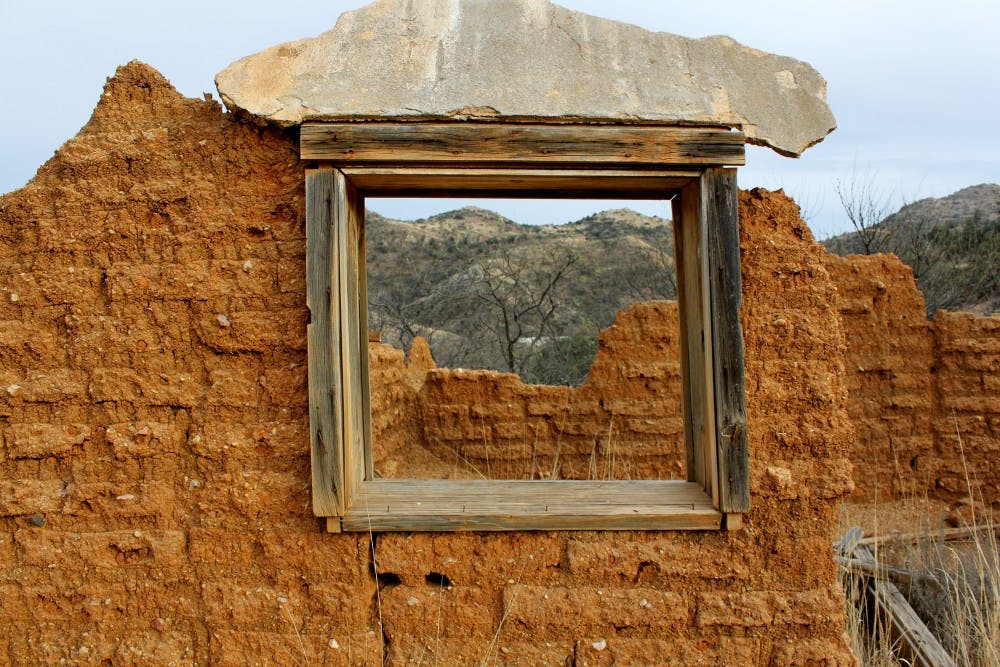Some ASU photography seniors are using their upcoming exhibition, "On The Wall," to share insights into parts of themselves, while others will reflect the world around them and their relationship to it.
Samantha Nieto's collection, for instance, will reconcile parts of her upbringing with her present perceptions by highlighting Catholic iconography and artifacts in a new light.
Nieto will show eight 35 mm film photos as well as a book containing what she terms "scanograms." In lieu of traditional photography, she said she found religious objects at places like yard sales and flea markets and literally scanned them as one would a document.
"I'm interested in artifacts and personal items that meant something important to someone who once was alive and are now being sold," she said. "For me, I was kind of bringing life back to them and conserving them instead of them just collecting dust."
Nieto said her other photos were processed in the style of photographer Arturo Herrera, who is known for letting his canisters soak in non-traditional mediums, such as coffee.
Nieto, however, skipped the coffee and chose to soak her rolls of film in holy water she obtained from the Phoenix church she attended as a child. Although she said the water ate away at some of the emulsion, the image of the religious objects remained clear in the photos. Nieto said some viewers, like her mother, were able to connect to the photos on a spiritual level because of the effects of the holy water.
"It's almost like I'm practicing the faith by making art from it," she said.
Similar to Nieto, Ashley Ball's collection will also examine an idea that struck a chord with her personally for many years: youth to adult transitions. However, her work reflects this concept through portraits of those close to her, although Ball said she made a lot of self-portraits during her early college career.
Ball said she used expired color film to make her photos, and by doing so made the colors a little warmer, which enhanced the moody lighting she used on her subjects.
Robin Sendele made a lot of portraits for her series on fraternity men as well, but used an old-fashioned view camera that required exceptional patience on the part of photographer and subject.
"The view camera stops everything, and it's interesting to pose the men in figures around them and make them stop for a second," she said. "Their lives are very crazy and they're not used to standing in front of an old, weird camera. They just have to stand still and stop life for two minutes."
Sendele said a major part of her motivation for pursuing this project was to shift traditional views of what it means to be in a fraternity.
"The message is sort of more up to interpretation," she said. "It's documenting their lifestyle and more explaining what they do outside of the stereotypical parties and crazy scenes. I want to challenge others to look at different layers of what fraternities have out of what the public knows."
Mario Mendez also used photography to examine the lives of people that surround him on a daily basis, though his subjects are often strangers.
He called his street photography "light hearted" and said it focuses on pleasant emotions and human interactions. He also said he rarely informs his subjects that he's taking photos of them, making his work exceptionally candid.
"I'm hoping to leave people with a warm, fuzzy feeling," he said. "The message is how you perceive and interpret the world around you and how you choose to do that."
For students like Kyle Dickey, people aren't the only lens through which others can see the world; perceptions are just as easily developed through inanimate objects, or what Dickey deems "the idea of things that outlast us."
To demonstrate this, he ventured to the old mining town of Ruby, Arizona and photographed the structures and details of abandoned buildings.
"A lot of what I’m trying to touch on is kind of how we treat our physical history, the things that are left behind after we shape the landscape to fit our own needs," he said. "Our human marks on a natural landscape."
While Dickey said he used his taste for landscape photography to explore the malleable nature of the built environment and its relationship with humankind, student Aimee Cook's landscapes reflect her ideas of home and its relation to place.
Cook said she spent much of her childhood traveling back and forth between Show Low, Arizona and Dillon, Montana, and decided to document that journey in photos.
"It was an exploration to see if home could be something more outside of a building or a childhood home," she said. "I was challenging the ideas we have around the idea of home and our definition of home."
Like her other "On The Wall" colleagues, Cook said her photographs document an inward process as well as one that others can relate to.
"I do hope audience will find something in my work," she said. "It’s hard to say because I feel like so much of this work was personal. But I hope they’ll be able to re-think their concept of home or relation to place."
Whether it's the concept of home, religion or daily life, "On The Wall" will leave much to explore and be explored.
Related links:
ASU photography student captures evolving family relationships
ASU Art Museum's "Superfake/The Parley" examines authenticity, emotional value of an artwork
Reach the reporter at celina.jimenez@asu.edu or follow @lina_lauren on Twitter.
Like The State Press on Facebook and follow @statepress on Twitter.




